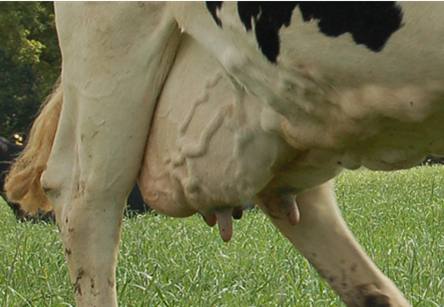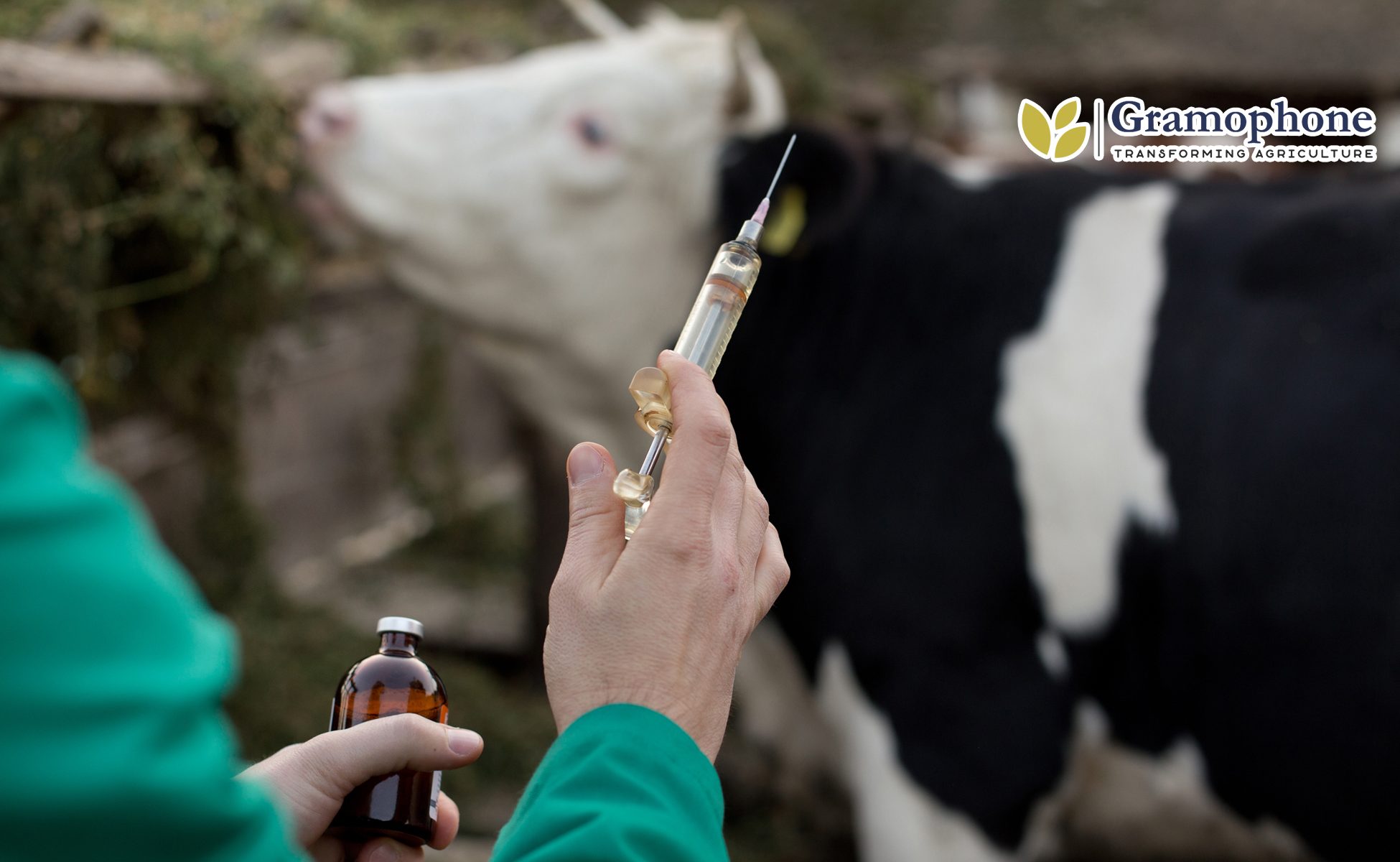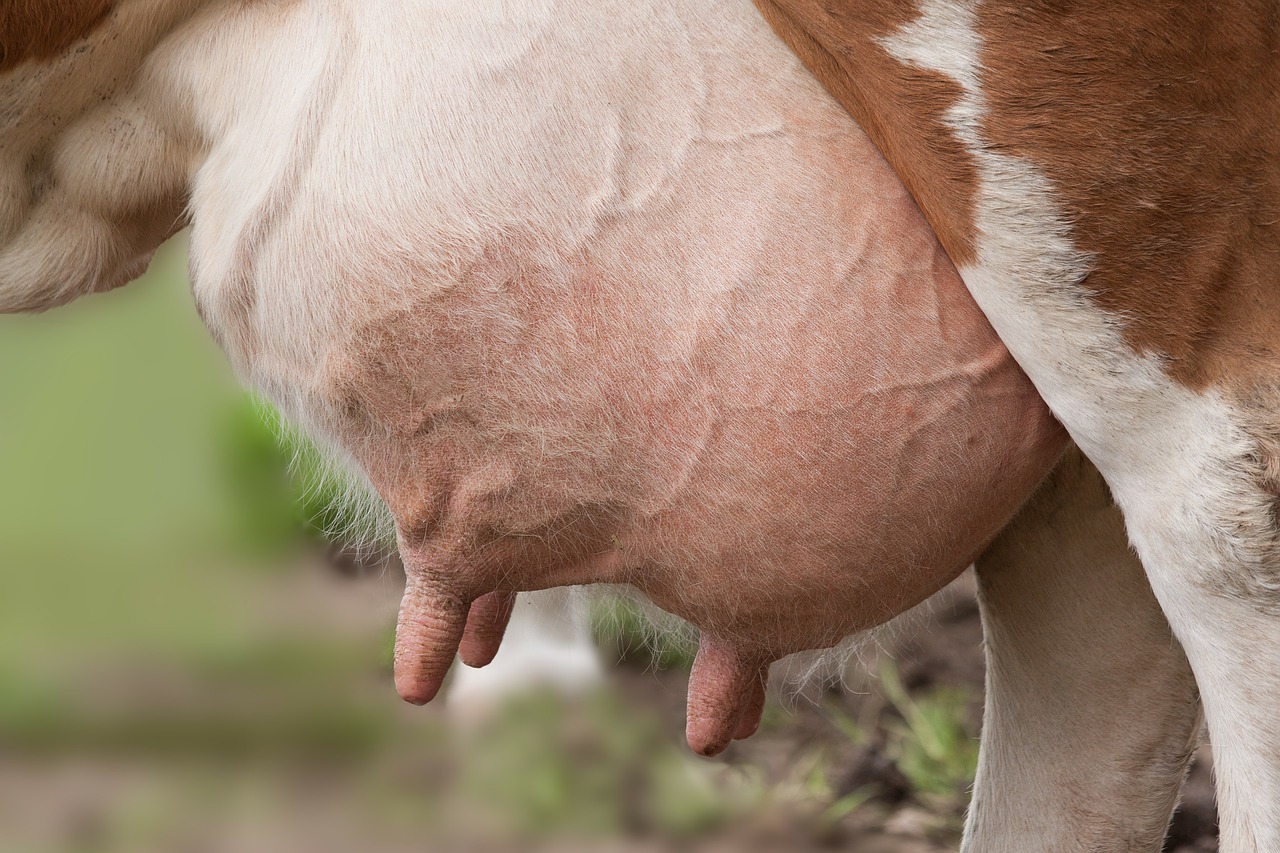- Mastitis disease is a bacterial disease that mostly occurs in milch cow, buffalo, and goat.
- In animal’s udder swelling, heat and light red color are the main symptoms of this disease.
- The way of extracting milk from excessive infection becomes very precise and pus appears.
- Consuming milk from infected animals can cause many diseases in humans. So this disease becomes more important.
Vaccination For Dairy Animals
Vaccination For Dairy Animals:-
| Sl. No | Name of Disease | Age at first dose | Booster dose | Subsequent dose |
| 1 | Foot and Mouth
Disease (FMD) |
4 months and above | 1 month after first dose | Six monthly |
| 2 | Haemorrhagic
Septicaemia (HS) |
6 months and above | – | Annually in endemic areas. |
| 3 | Black Quarter (BQ) | 6 months and above | – | Annually in endemic areas. |
| 4 | Brucellosis | 4-8 months of age
(Only female calves) |
– | Once in a lifetime |
| 5 | Theileriosis | 3 months of age and above | – | Once in a lifetime. Only required for crossbred and exotic cattle. |
| 6 | Anthrax | 4 months and above | – | Annually in endemic areas. |
| 7 | IBR | 3 months and above | 1 month after first dose | Six monthly (vaccine presently not produced in India) |
| 8 | Rabies (Post bite therapy only) | Immediately after suspected bite. | 4th day | 7,14,28 and 90 (optional) days after first dose. |
Source : NDDB Handbook of Good Dairy Husbandry Practices
Points to be noted
- Animals should be in good health at the time of vaccination. Do not vaccinate animals which are already in stress (Like bad weather, Scarcity of fodder & water, Disease outbreaks, after transportation etc.)
- Try to deworm animals & remove ecto-parasites one to two weeks prior to vaccination.
- Strictly follow vaccination schedule after consultation with veterinary experts.
- Keep records of vaccination for name of vaccine manufacturing company, Batch number, Expiry date, Dose & route of vaccine.
- Maintain cold chain for vaccines which may have to keep for 2-8 degree Celsius temperature.
- Create stress free environment for animals after vaccination.
Like and share with other farmers by clicking on button below
SharePrevention/Control/Treatment of Mastitis
Prevention/Control/Treatment of Mastitis:-
Prevention:-
- A good milking routine is vital.
- This usually consists of applying a pre-milking teat dip or spray, such as an iodine spray, and wiping teats dry prior to milking.
- The milking machine is then applied.
- After milking, the teats can be cleaned again to remove any growth medium for bacteria.
- A post-milking product such as iodine-propylene glycol dip is used as a disinfectant and a barrier between the open teat and the bacteria in the air.
- Mastitis can occur after milking because the teat holes close after 15 minutes if the animal sits in a dirty place with feces and urine
Control
- Practices such as good nutrition, proper milking hygiene, and the culling of chronically infected cows can help.
- Ensuring that cows have clean, dry bedding decreases the risk of infection and transmission.
- Dairy workers should wear rubber gloves while milking, and machines should be cleaned regularly to decrease the incidence of transmission.
Treatment
- Treatment is possible with long-acting antibiotics, but milk from such cows is not marketable until drug residues have left the cow’s system.
- Antibiotics may be systemic (injected into the body), or they may be forced upwards into the teat through the teat canal (intramammary infusion).
- Cows being treated may be marked with tape to alert dairy workers, and their milk is syphoned off and discarded.
- To determine whether the levels of antibiotic residuals are within regulatory requirements, special tests exist.
- Vaccinations for mastitis are available, but as they only reduce the severity of the condition, and cannot prevent recurring infections, they should be used in conjunction with a mastitis prevention program.
Like and share with other farmers by clicking on button below
ShareMastitis Disease in Dairy Cattle
Mastitis Disease in Dairy Cattle:-
- This disease can be identified by abnormalities in the udder such as swelling, heat, redness, hardness, or pain (if it is clinical). Other indications of mastitis may be abnormalities in milk such as a watery appearance, flakes, or clots. When infected with sub-clinical mastitis, a cow does not show any visible signs of infection or abnormalities in milk or on the udder.
- Cattle affected by mastitis can be detected by examining the udder for inflammation and swelling, or by observing the consistency of the milk, which will often develop clots or change color when a cow is infected.
Like and share with other farmers by clicking on button below
Share


